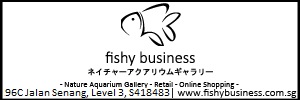I'm using activated carbon only to filter the tap water. I did not use it in my filter becasue I'm afraid that it will affect my fertelizer. Futhermore activated carbon need to be change regularly.
Below info taken from Wiki
Water contaminants that
can be reduced to acceptable standards
by activated carbon filtration.
(Water Quality Association, 1989)
---------------------------------------
Primary Drinking Water Standards
Contaminant *MCL, mg/L
---------------------------------------
Inorganic Contaminants
Organic Arsenic Complexes 0.05
Organic Chromium Complexes 0.05
Mercury (Hg+2) Inorganic 0.05
Organic Mercury Complexes 0.002
Organic Contaminants
Benzene 0.005
Endrin 0.0002
Lindane 0.004
Methoxychlor 0.1
1,2-dichloroethane 0.005
1,1-dichloroethylene 0.007
1,1,1-trichloroethane 0.200
Total Trihalomethanes (TTHMs) 0.10
Toxaphene 0.005
Trichloroethylene 0.005
2,4-D 0.1
2,4,5-TP (Silvex) 0.01
Para-dichlorobenzene 0.075
---------------------------------------
Secondary Drinking Water Standards
Contaminant **SMCL
---------------------------------------
Color 15 color units
Foaming Agents (MBAS) 0.5 mg/L
Odor 3 threshold
odor number
---------------------------------------
*Maximum Contaminant Level
**Secondary Maximum Contaminant Level










 Reply With Quote
Reply With Quote











 It been almost a month on my mature tank. No problem till now (base on physical assessment).
It been almost a month on my mature tank. No problem till now (base on physical assessment).  It can also help remove oily surface which can limit light penetration.
It can also help remove oily surface which can limit light penetration.  Let it floats around and remove it after it does its job. I did not try it but info in ADA catalogue. Got my from Tokyo not $x (I think around $18 for a box)don't know how much it cost here though
Let it floats around and remove it after it does its job. I did not try it but info in ADA catalogue. Got my from Tokyo not $x (I think around $18 for a box)don't know how much it cost here though

Bookmarks